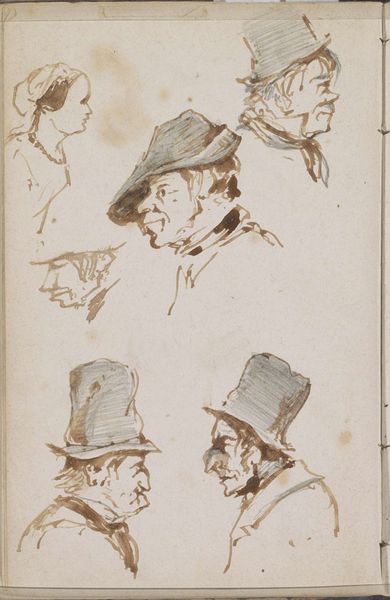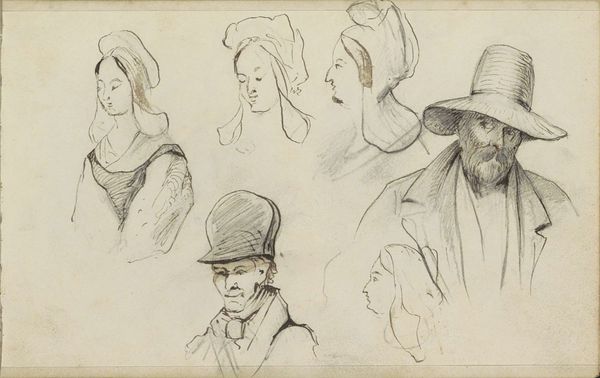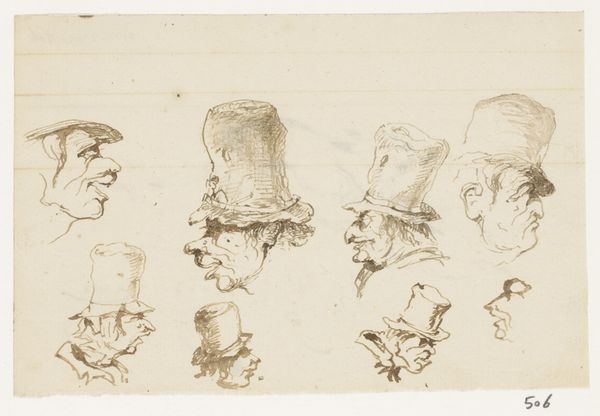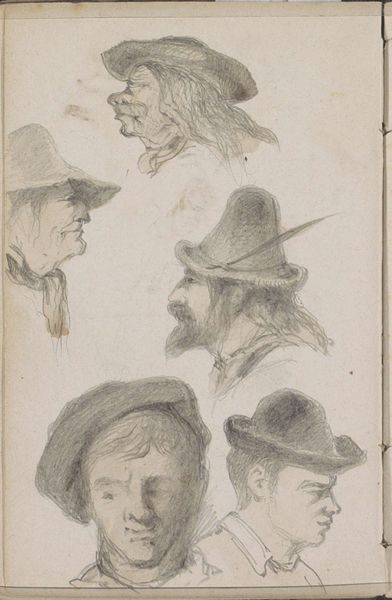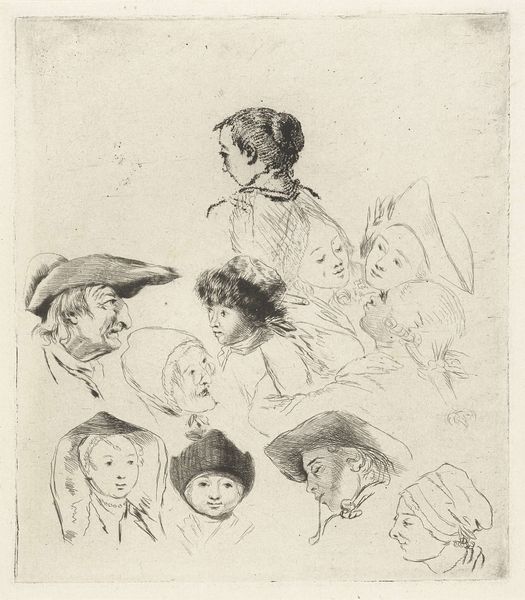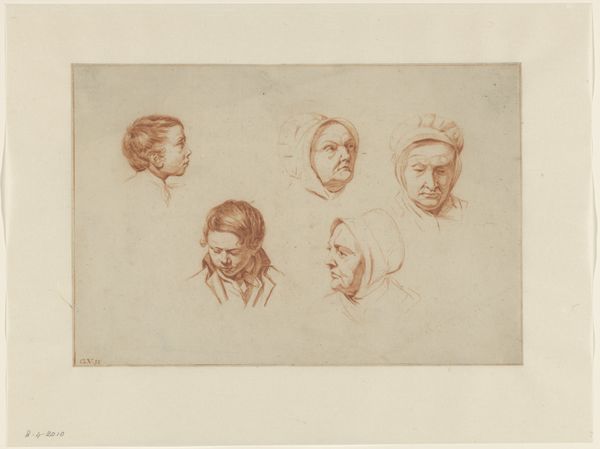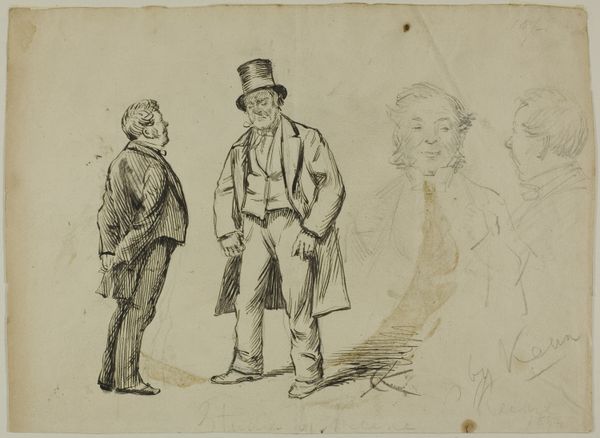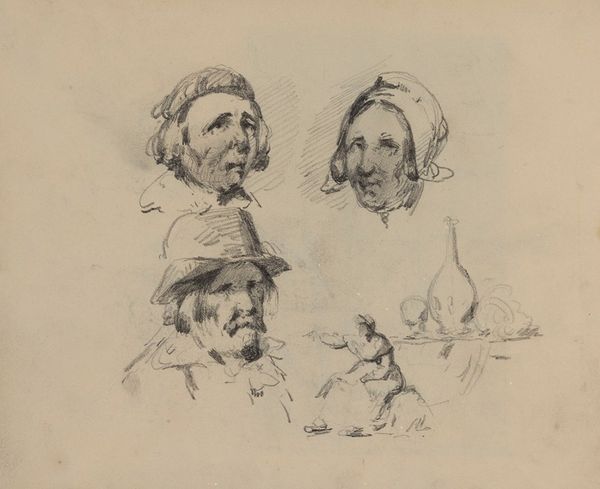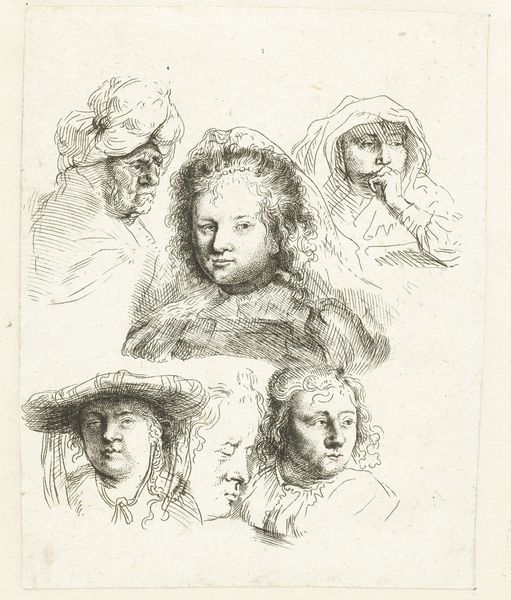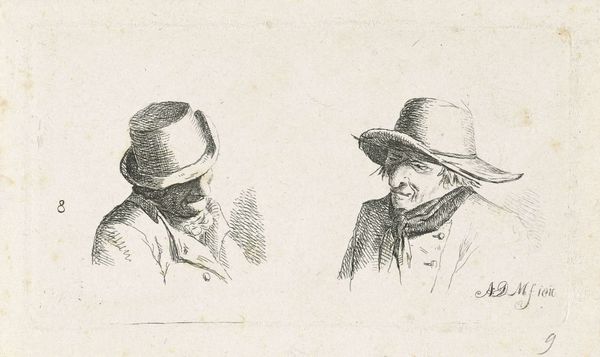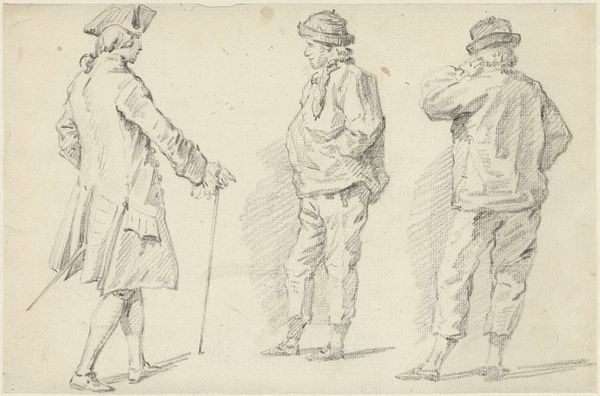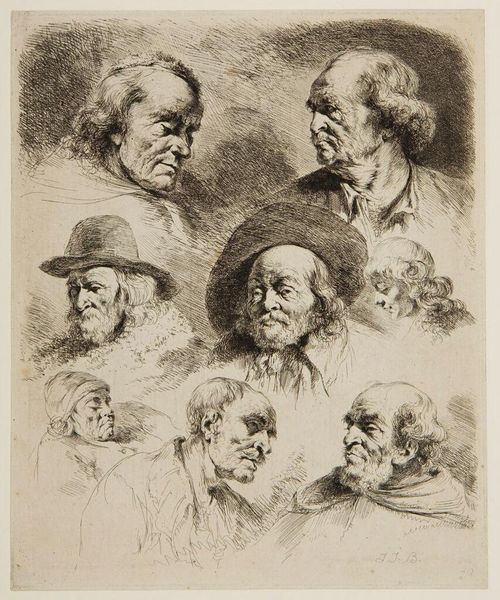
drawing, pencil
#
portrait
#
drawing
#
amateur sketch
#
toned paper
#
light pencil work
#
pencil sketch
#
personal sketchbook
#
pencil drawing
#
romanticism
#
pencil
#
sketchbook drawing
#
pencil work
#
watercolour illustration
#
genre-painting
#
sketchbook art
Dimensions: height 179 mm, width 245 mm
Copyright: Rijks Museum: Open Domain
Curator: This sketch, attributed to Louis Meijer, titled "Studieblad met vijf jongens- en mannenhoofden," or "Study Sheet with Five Heads of Boys and Men" in English, and dated between 1819 and 1866, is intriguing, isn't it? Editor: It has a curious, fleeting quality. There’s a kind of gentle melancholy in the eyes of each figure. You sense this wasn't about capturing likeness, more about practicing the craft of observation. All sketched on a single sheet with a light, sepia-toned pencil. Curator: Exactly. Look at the way Meijer utilizes humble materials like pencil on toned paper. It speaks volumes about access to resources and artistic training in that period, doesn't it? It feels like he's honing his craft, these portraits appearing almost dreamlike on the page. Each captured head feels so raw, conveying intimate emotions without ever delving into sentimentality. It has a very light touch! Editor: Definitely. This piece reflects the artist's working practice; the toned paper suggesting an attempt to resolve the complexities of light, the pencil hinting at speed and fluidity. Were these commissions, you wonder? Or are they faces drawn from daily encounters within the artist’s milieu? Were top hats really THAT big?! I suspect it was an amateur who loved playing with shading. Curator: That's the charm of a work like this. You start to wonder about all kinds of elements: class, fashion... all within these swiftly executed strokes! In its simplicity, there's an interesting story about 19th-century artistic education happening as we consider each light pencil marking. The genre-painting element that comes into play provides more understanding for context too, don't you think? Editor: Yes! It offers so much with relatively simple means, as well as questions the role of drawing as a mere preliminary activity against it being the finished work. These are also real objects with lives. From the graphite core of the pencils to the pulp and additives of that paper. Think of the factory labor, the mining and the transportation all tied together into this one work. Curator: The intimacy is lovely though, isn't it? We can feel Meyer’s hand and eye at play. And the varying states of completion lend themselves to that immediacy! Editor: Yes, you can almost trace the physical process from start to finish, understanding more about both the production of the artist and of the artwork itself. Curator: Seeing such vulnerable emotions rendered in so few marks—it's captivating. Editor: Indeed, it forces you to ponder labor, materials, and the consumption of art on multiple levels. Food for thought, certainly!
Comments
No comments
Be the first to comment and join the conversation on the ultimate creative platform.
